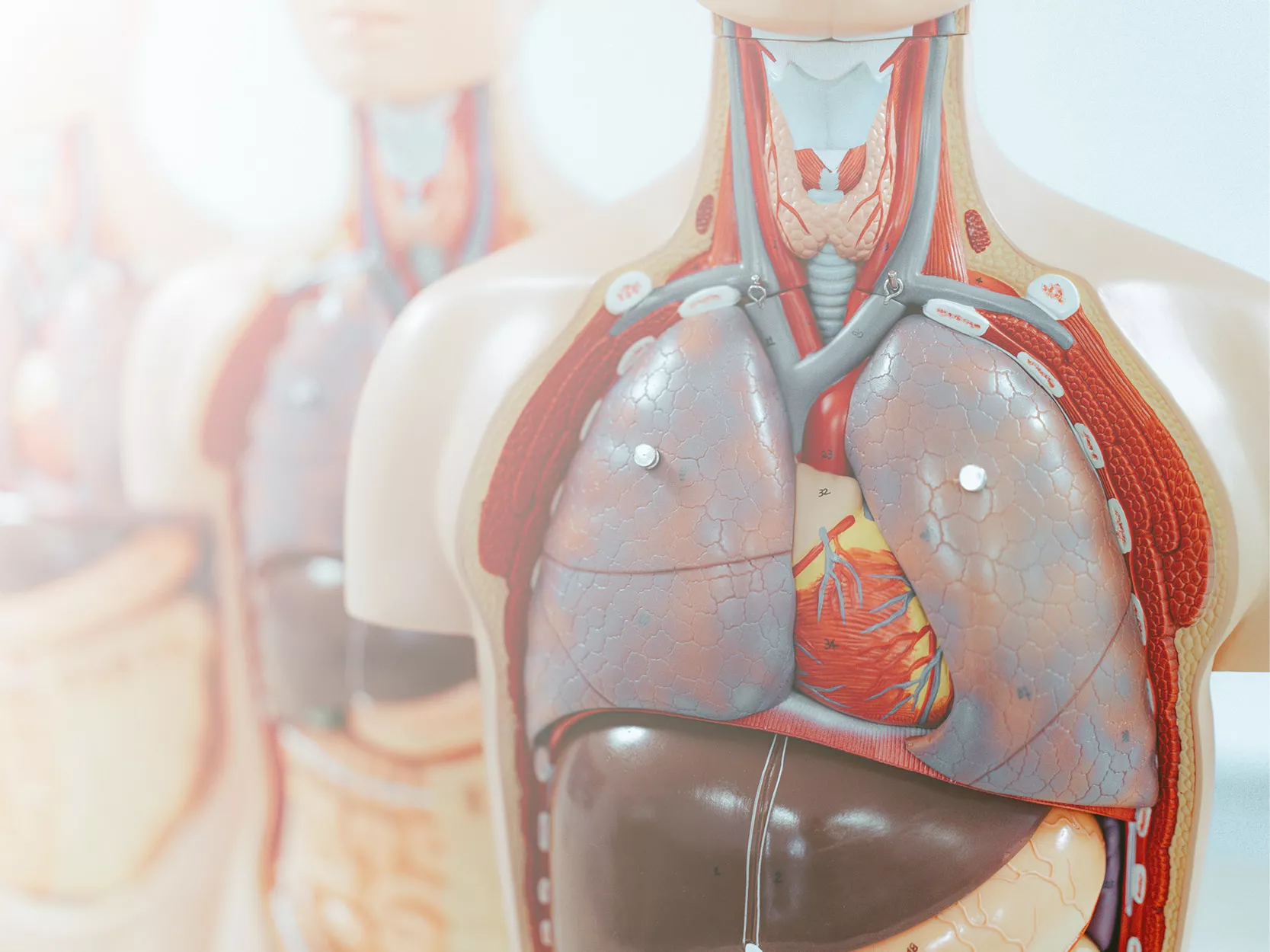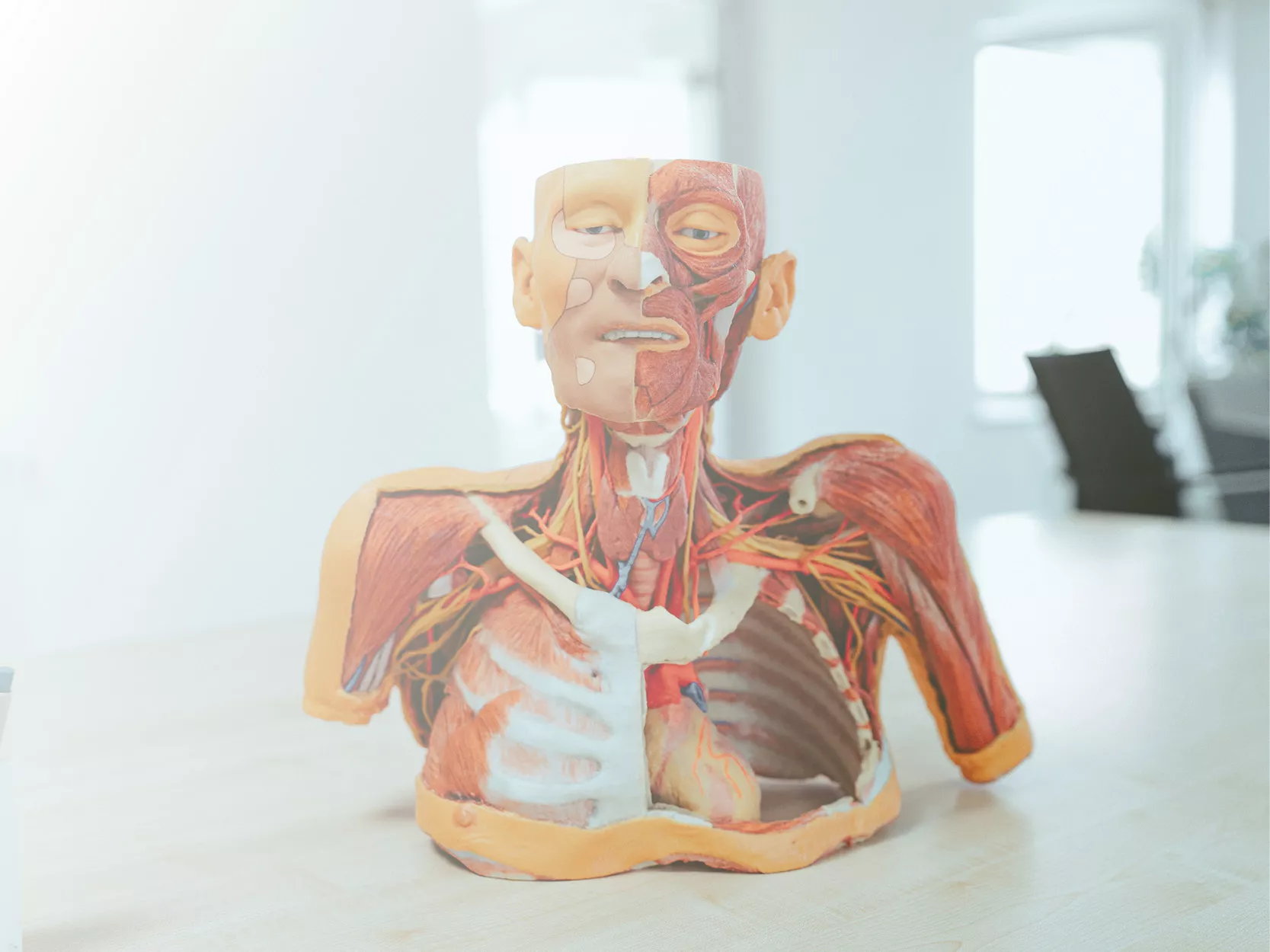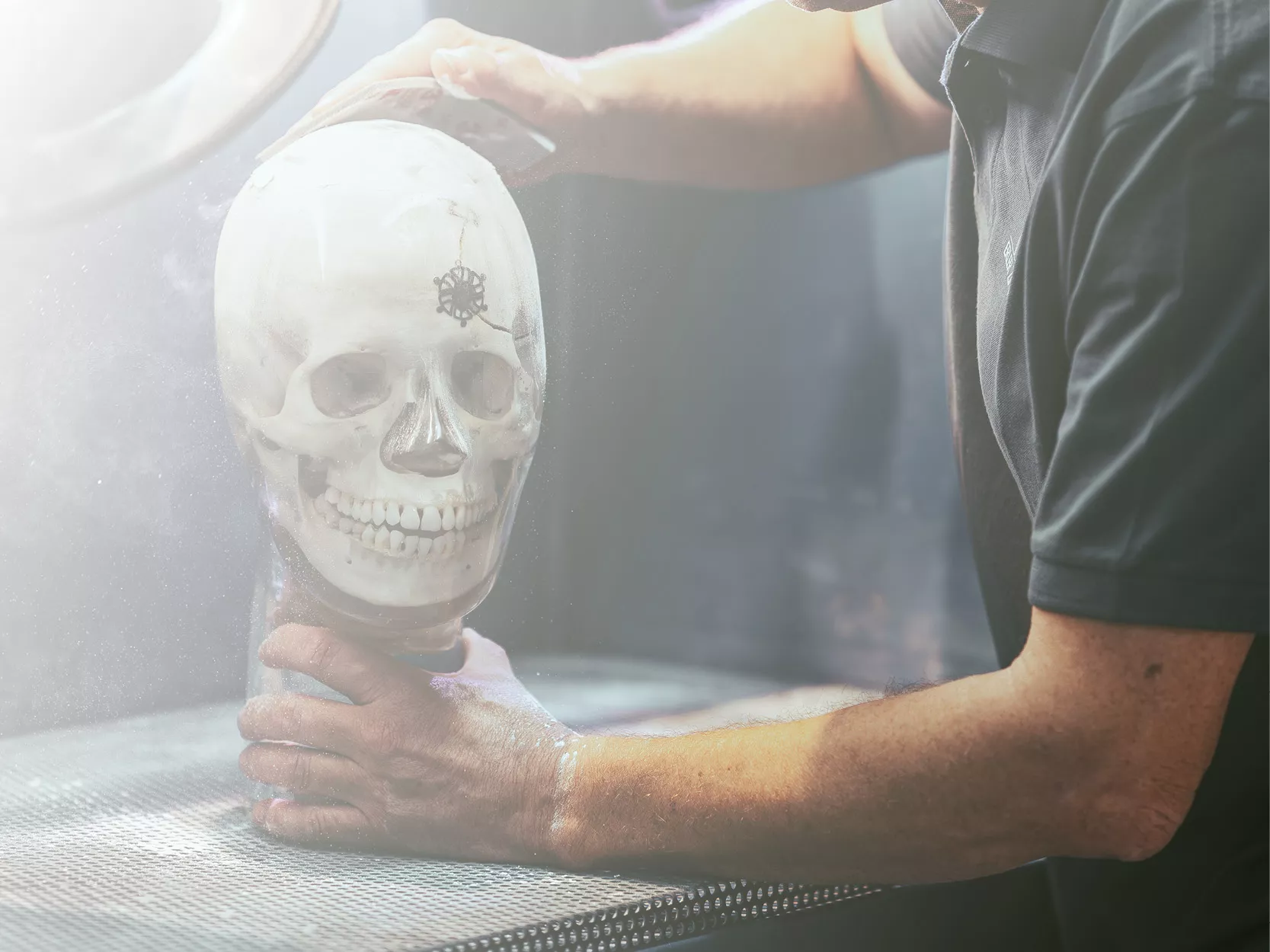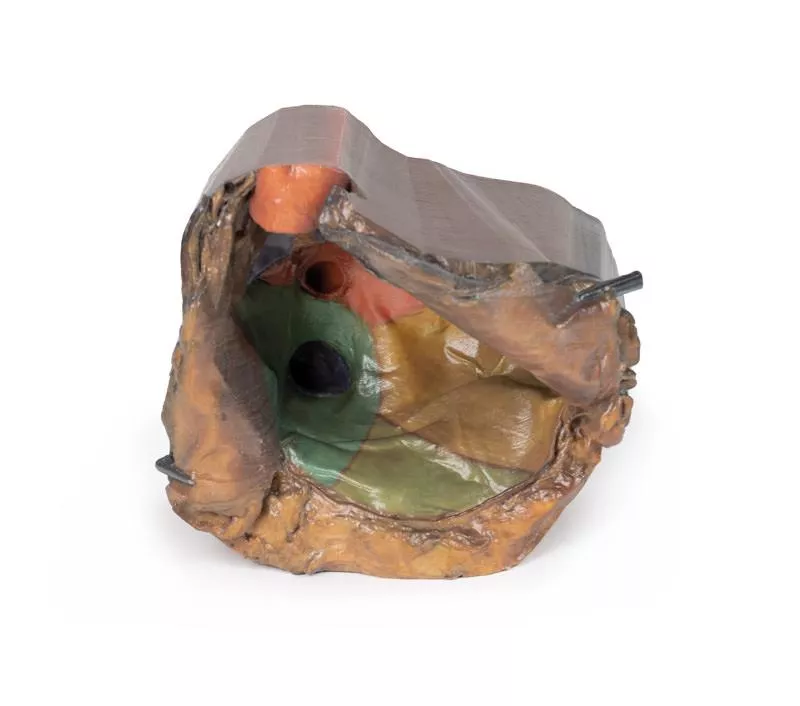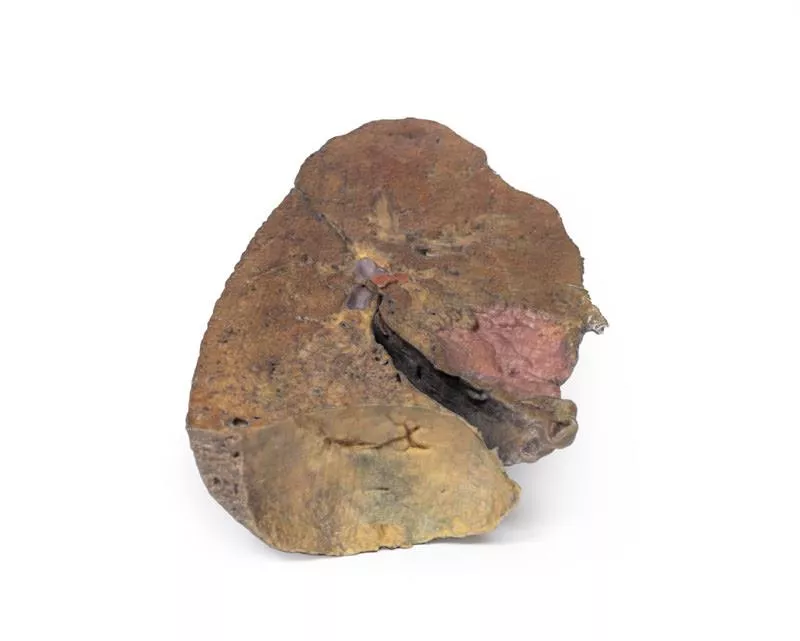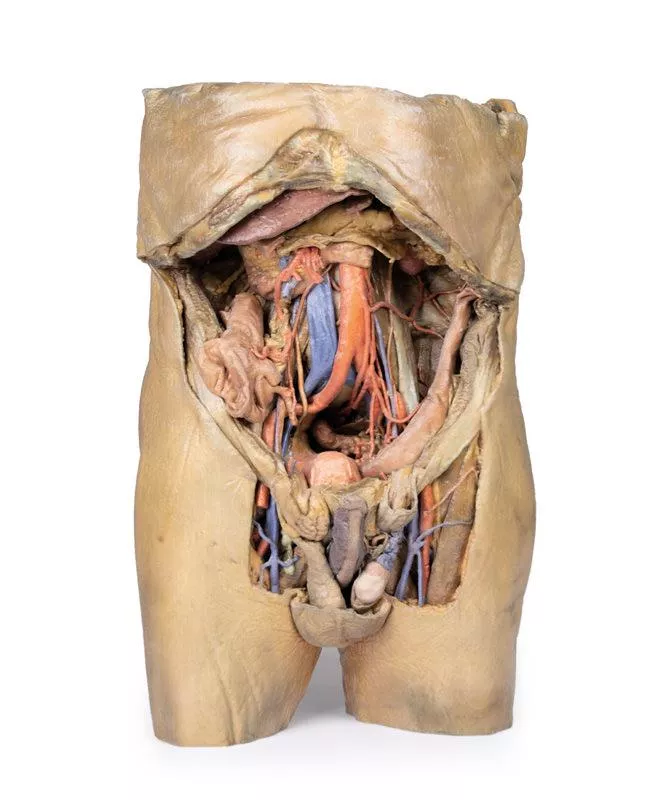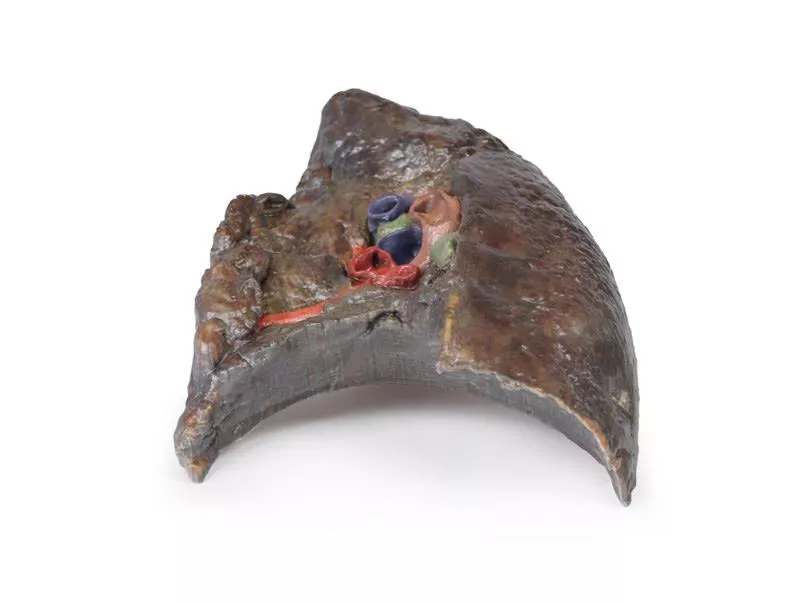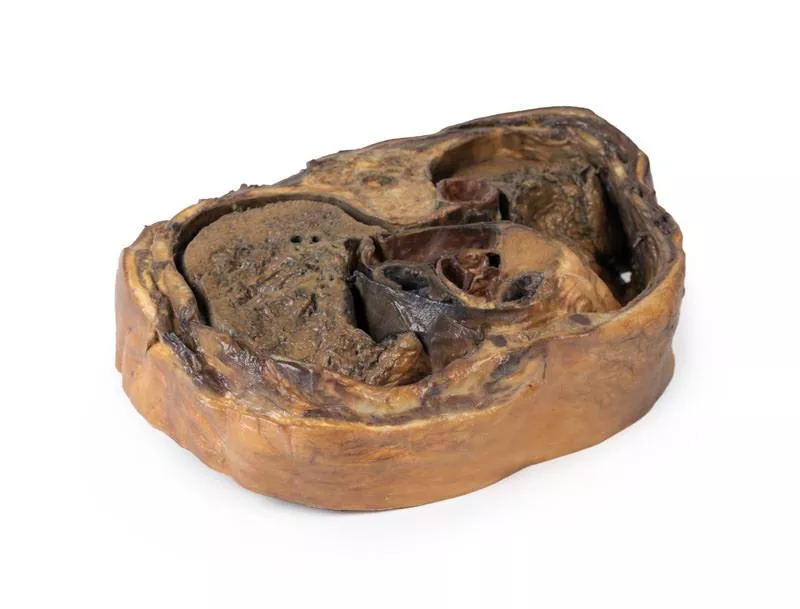Product information "Right lung, hilum removed"
This 3D model provides a detailed sectional view of the right lung, serving as a complementary piece to the TW 63 Right Lung Hilum and contrasting with the TW 61 Left Lung Section.
It highlights the macrostructure of the lung from apex to base, offering a valuable perspective for anatomical study and comparison between lung sides.
Key Features:
Lobar Organization:
- Clearly defined oblique and horizontal fissures segment the lung into the superior, middle, and inferior lobes.
- The depth of these fissures is visible, showing their extension into the internal lung structure.
Surface Impressions:
- Prominent rib impressions run longitudinally from the apex to the base on the lateral aspect, indicating close contact with the thoracic cage.
Diaphragmatic Surface:
- The deeply concave base reflects the domed shape of the right diaphragm, which is elevated in life due to the position of the underlying liver.
It highlights the macrostructure of the lung from apex to base, offering a valuable perspective for anatomical study and comparison between lung sides.
Key Features:
Lobar Organization:
- Clearly defined oblique and horizontal fissures segment the lung into the superior, middle, and inferior lobes.
- The depth of these fissures is visible, showing their extension into the internal lung structure.
Surface Impressions:
- Prominent rib impressions run longitudinally from the apex to the base on the lateral aspect, indicating close contact with the thoracic cage.
Diaphragmatic Surface:
- The deeply concave base reflects the domed shape of the right diaphragm, which is elevated in life due to the position of the underlying liver.
Erler-Zimmer
Erler-Zimmer GmbH & Co.KG
Hauptstrasse 27
77886 Lauf
Germany
info@erler-zimmer.de
Achtung! Medizinisches Ausbildungsmaterial, kein Spielzeug. Nicht geeignet für Personen unter 14 Jahren.
Attention! Medical training material, not a toy. Not suitable for persons under 14 years of age.




